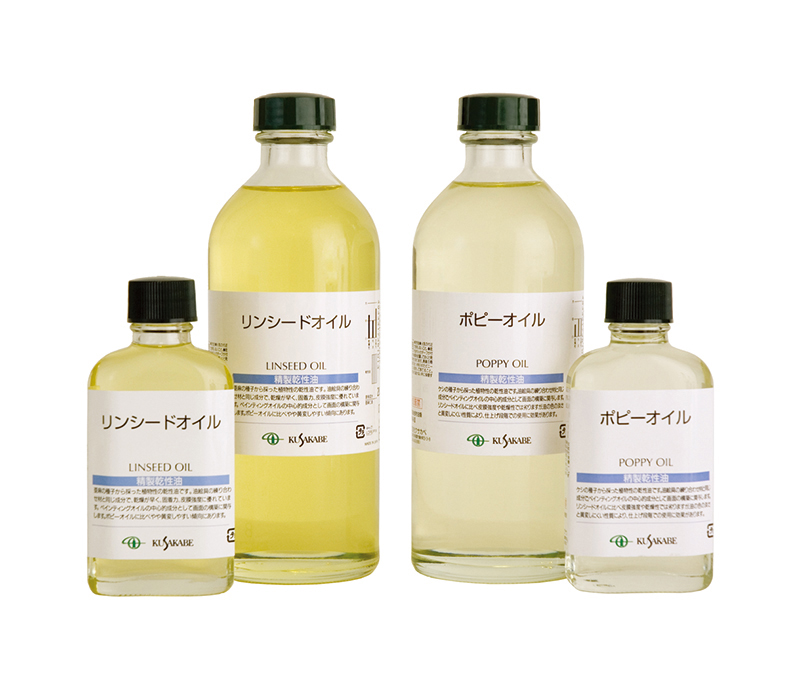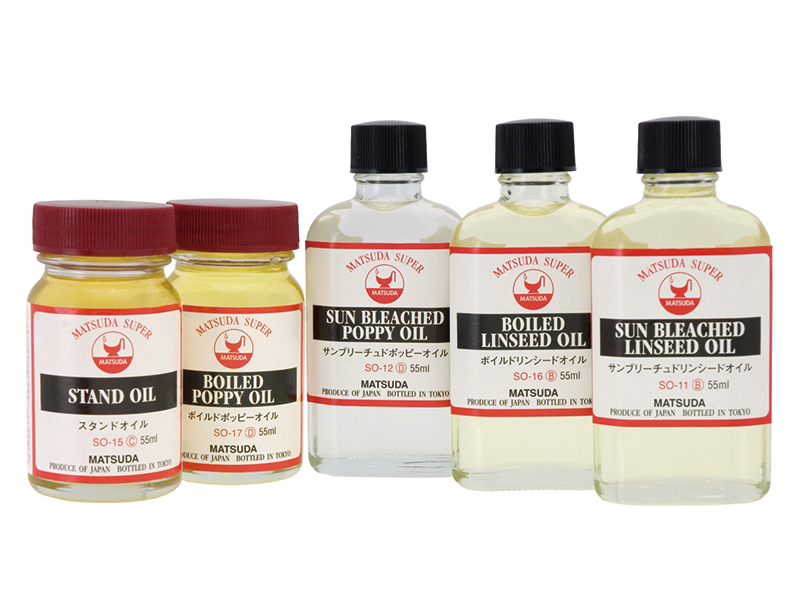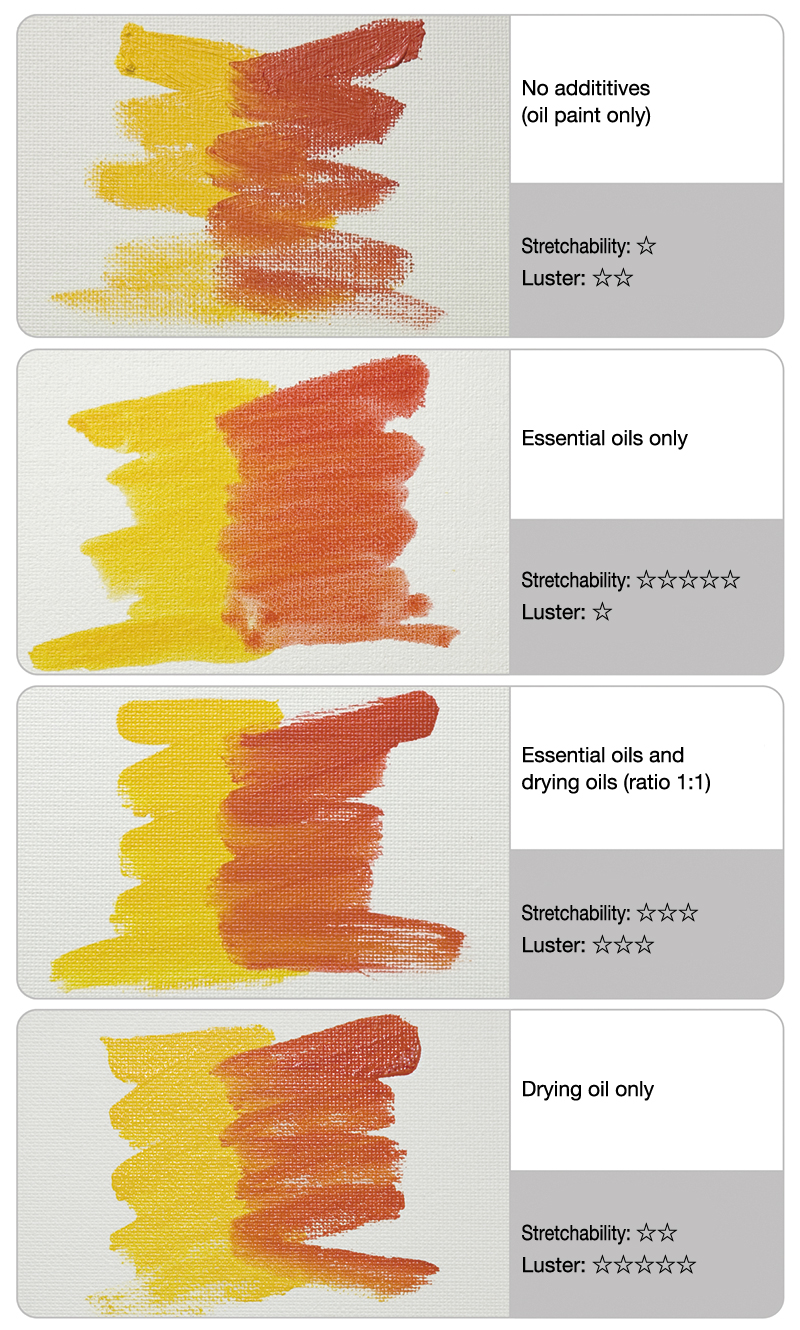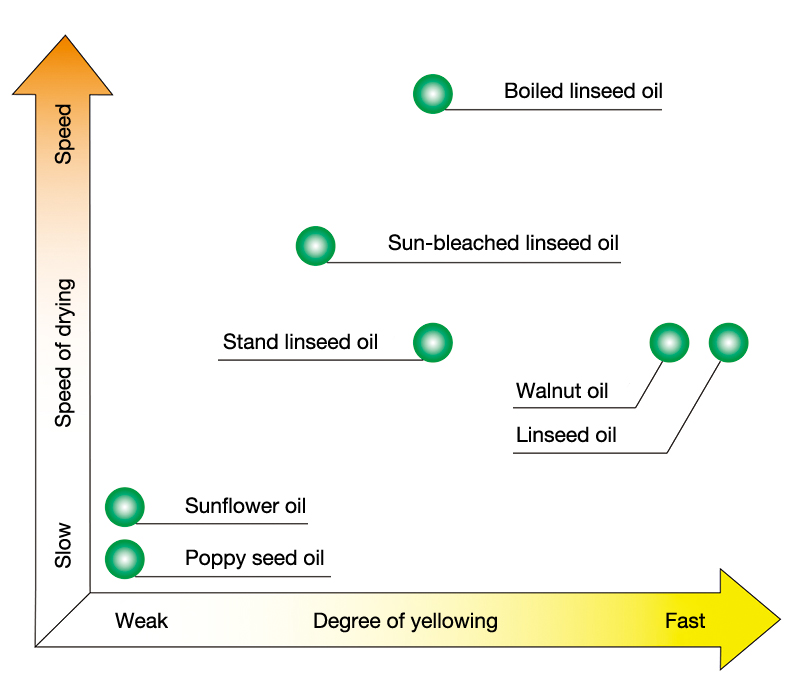Drying Oils
乾性油
Kanseiyu
CATEGORIES
Drying oils, including linseed oil and poppy oil, are used in painting in order to adjust the thickness of the paints, improve their stretchability, increase the fixativity of the paints to the surface, and give oil paints their characteristic luster and sense of translucence. It is also blended into paints as the fixing ingredient (medium) to affix the pigment to the surface of the painting.
Drying oils form a film and harden as a reaction to absorbing oxygen in the air. Because they do not evaporate as essential oils do, after drying they will not decrease in volume, nor will the paints thin. The reason that oil-based paints dry slowly is because drying oils bond with oxygen very slowly, with the process being said to take roughly thirty years to fully complete.
Drying oils are made by refining such raw materials as the seeds and fruits of plants. Linseed oil, which is made from flax, dries quickly but causes a great deal of yellowing; poppy oil yellows very little but dries more slowly. Other types of oil include safflower oil and walnut oil, with each causing more or less yellowing, drying at different rates, and producing films of varying hardness. Additionally, drying oils are divided into two types: processed and unprocessed. Unprocessed oils are those made by refining the oils extracted from the raw materials described earlier; processed oils are those to which further artificial processing has been performed. Concrete examples of these would be: “sun-bleached oil,” produced by exposing unprocessed oils to sunlight and air for a long period; “stand oil,” produced by heating unprocessed oils without exposing them to air, and “boiled oil,” produced by heating unprocessed oils as they are exposed to the air. Each process produces different qualities and characteristics than those seen in unprocessed oils.
Please note that these oils are normally used in a mixture with an essential oil such as turpentine. The solvent should have larger amounts of essential oils and smaller amounts of drying oils at the beginning of the painting process, with the quantity of drying oil being gradually increased as one approaches completion of the painting. Additionally, drying oils should be used only after making a solution from the appropriate quantities in an oilcan or something of that sort.


- Changing the "stretchability" and "luster" of paints using various art solutions


